
- 1. Why Choose Drought-Tolerant Plants?
- 2. Types of Drought-Tolerant Plants for Different Regions
- 3. Tips for Planting and Maintaining Drought-Tolerant Plants
- 4. Best Drought-Tolerant Plants for Hot, Dry Climates
- 5. Real-Life Example: Creating a Drought-Resistant Garden
- 6. Conclusion: Designing a Sustainable Garden with Drought-Tolerant Plants
1. Why Choose Drought-Tolerant Plants?
Drought-tolerant plants are a smart choice for any garden, particularly in regions that experience long periods of dry weather. These plants are able to survive with little water, making them ideal for water-conscious gardeners and those living in arid or semi-arid climates. Not only do drought-tolerant plants help conserve water, but they also reduce the maintenance and cost associated with keeping a lush, green garden in dry conditions.
Additionally, choosing drought-tolerant plants promotes sustainability by supporting ecosystems that are adapted to thrive in dry climates. With proper care, these plants can flourish and add color, texture, and beauty to your landscape, while helping you reduce your environmental footprint.
2. Types of Drought-Tolerant Plants for Different Regions
When selecting drought-tolerant plants, it’s important to consider your local climate and region. Plants that thrive in one area may not be suitable for another, so knowing what works best in your region is key to a successful, low-maintenance garden. Let’s break down the best drought-tolerant plants for different climates:
2.1 Desert Climates
In desert climates, plants need to withstand extreme heat and minimal rainfall. Succulents and cacti are excellent choices for these regions. These plants store water in their leaves, stems, or roots, allowing them to survive with little irrigation.
2.2 Mediterranean Climates
Mediterranean climates, which have mild, wet winters and hot, dry summers, are ideal for drought-tolerant plants like lavender, rosemary, and olive trees. These plants thrive in the dry heat of summer while benefiting from the wet winters.
2.3 Temperate Regions
In temperate regions, where summers are dry but winters are cold, plants like ornamental grasses, coneflowers, and sedum can thrive with minimal water. These plants are hardy and can withstand both drought conditions and cooler temperatures.
3. Tips for Planting and Maintaining Drought-Tolerant Plants
Successfully growing drought-tolerant plants requires more than just picking the right species. It also involves understanding the specific needs of each plant and providing the best growing conditions. Here are some key tips for planting and maintaining drought-tolerant plants:
3.1 Proper Soil Preparation
Before planting, ensure your soil is well-draining. Drought-tolerant plants don’t like wet feet, so adding organic matter like compost or mulch can help improve drainage and retain moisture in the soil. This will help your plants establish strong roots while preventing waterlogging during periods of rain.
3.2 Watering Technique
While drought-tolerant plants are designed to withstand dry conditions, they still need water to establish their roots. During the first few months after planting, water them deeply but infrequently to encourage deep root growth. Once established, reduce the watering frequency and water only when necessary, as overwatering can stress these plants.
3.3 Mulching
Mulching around your plants can help retain soil moisture, suppress weeds, and regulate soil temperature. Use organic mulch like straw or bark to cover the soil around your plants, especially during hot summer months. This will reduce evaporation and keep the roots cool.
4. Best Drought-Tolerant Plants for Hot, Dry Climates
If you live in an area with hot and dry summers, here are some of the best drought-tolerant plants that can thrive in these conditions:
4.1 Agave
Agave is a hardy, low-maintenance plant that thrives in dry, sunny spots. With its striking architectural shape, it adds a modern touch to any landscape. Agave needs little water and can survive in hot, arid conditions, making it perfect for desert-like environments.
4.2 Lavender
Lavender is not only a drought-tolerant plant, but it also offers a fragrant and beautiful addition to your garden. It thrives in full sun and well-drained soil, making it ideal for hot, dry climates. Plus, it attracts pollinators like bees, adding extra life to your garden.
4.3 Yucca
Yucca plants are another great choice for dry regions. With their spiky leaves and dramatic flowers, they add visual interest to the garden while thriving in drought conditions. They require minimal watering once established and can tolerate extreme heat.
4.4 Sedum
Sedum, or “stonecrop,” is a popular drought-tolerant plant that forms dense, mat-like growth with thick, succulent leaves. It’s perfect for rock gardens or as ground cover in dry areas. Sedum is especially hardy and can survive with very little water.
5. Real-Life Example: Creating a Drought-Resistant Garden
Meet Jane, a homeowner in Southern California who wanted to create a low-maintenance garden that could thrive despite the region’s hot, dry summers. After doing some research, she decided to plant a variety of drought-tolerant plants like lavender, succulents, and ornamental grasses. Jane took care to prepare the soil with compost to ensure proper drainage and applied a thick layer of mulch to help retain moisture.
Over the following months, Jane’s garden flourished with minimal watering. The plants required little maintenance and thrived in the hot, dry conditions. The result was a beautiful, sustainable garden that provided a refreshing, water-efficient oasis during the warm months, all while reducing her water usage significantly.
6. Conclusion: Designing a Sustainable Garden with Drought-Tolerant Plants
Choosing the right drought-tolerant plants for your region is an excellent way to create a beautiful, sustainable landscape that thrives in hot, dry conditions. By selecting plants that are suited to your climate, preparing the soil, and using efficient watering techniques, you can create a garden that requires minimal upkeep while conserving water.
If you're looking for the best drought-tolerant plants or gardening tools, be sure to visit Beautiful Landscapes for recommendations. With the right plants and care, your garden can flourish year-round, no matter the climate!


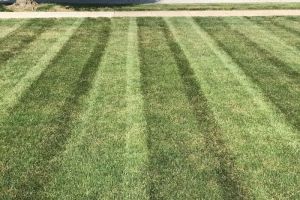


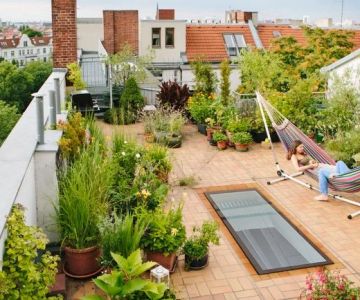


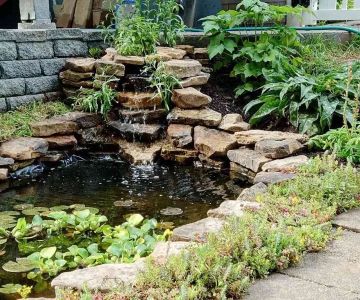
 Grassdoctors Lawn & Landscape4.0 (12 reviews)
Grassdoctors Lawn & Landscape4.0 (12 reviews) Dunner's Outdoor Services4.0 (39 reviews)
Dunner's Outdoor Services4.0 (39 reviews) TruGreen Lawn Care4.0 (353 reviews)
TruGreen Lawn Care4.0 (353 reviews) Scenic Landscape Inc5.0 (4 reviews)
Scenic Landscape Inc5.0 (4 reviews) Kingdom Lawn Care LLC5.0 (2 reviews)
Kingdom Lawn Care LLC5.0 (2 reviews) BladeScapes Lawn and Snow5.0 (2 reviews)
BladeScapes Lawn and Snow5.0 (2 reviews) How to Plan an Entryway Garden That Welcomes Guests: Design Tips and Ideas
How to Plan an Entryway Garden That Welcomes Guests: Design Tips and Ideas How to Use Shade & Sun Zones to Maximize Space: Smart Outdoor Design Tips
How to Use Shade & Sun Zones to Maximize Space: Smart Outdoor Design Tips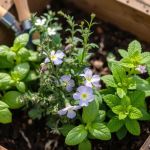 How to Grow a Herb Garden in Your Landscape: A Step-by-Step Guide
How to Grow a Herb Garden in Your Landscape: A Step-by-Step Guide How to Plan a Garden for Children’s Learning and Play
How to Plan a Garden for Children’s Learning and Play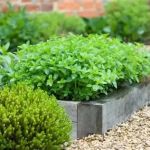 How to Landscape With Ornamental Edibles for Dual Use
How to Landscape With Ornamental Edibles for Dual Use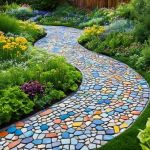 How to Build a Stone Pathway With a Natural Flow
How to Build a Stone Pathway With a Natural Flow